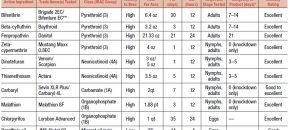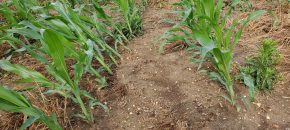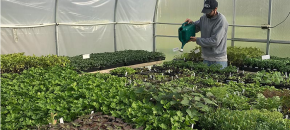
Blueberries: Aphids: In most cases, aphid colonies have already been treated. Growers have used various products with varying results.
Continue reading...Rutgers Cooperative Extension

Blueberries: Aphids: In most cases, aphid colonies have already been treated. Growers have used various products with varying results.
Continue reading...
June 9, 2021 Last night’s storm brought ground shaking lightening strikes and nearly an inch of rain to most of Salem County south of Route 40 and over two inches of rain north of Route 40 with pockets exceeding 2.3 inches near the Gloucester-Salem line. Corn: Prior to the deluge preemergence herbicides were continueing […]
Continue reading...It’s a little early in the season but now is a good time to start thinking about ways to help mitigate cucurbit downy mildew pressure later on. All cucurbit fields, especially cucumber and other summer squash fields should be destroyed immediately after the last harvest to help limit potential inoculum sources for cucurbit downy mildew, […]
Continue reading...
The Rutgers Cooperative Extension Training Program-RU Ready to Farm is looking for input from beginner farmers on what types of subjects they would like to see covered. The 2022 season of RU Ready to Farm will feature in person workshops that are open to the general beginner farmer community, and the focus and content of […]
Continue reading...Basil downy mildew has been confirmed in potted sweet basil being sold by a box-store in Cumberland County in southern New Jersey. This is the second report of BDM in the state and region this growing season. All basil growers are encouraged to scout their fields or greenhouses on a daily basis and should consider […]
Continue reading...Angular leaf spot is common in New Jersey and the region. It often shows up during cooler, wet weather and isolated rain. Angular leaf spot will first appear as, small water-soaked lesions which will expand until they reach a larger leaf vein resulting in the angular looking symptoms on leaves. Under heavy disease pressure, the bacteria will […]
Continue reading...
